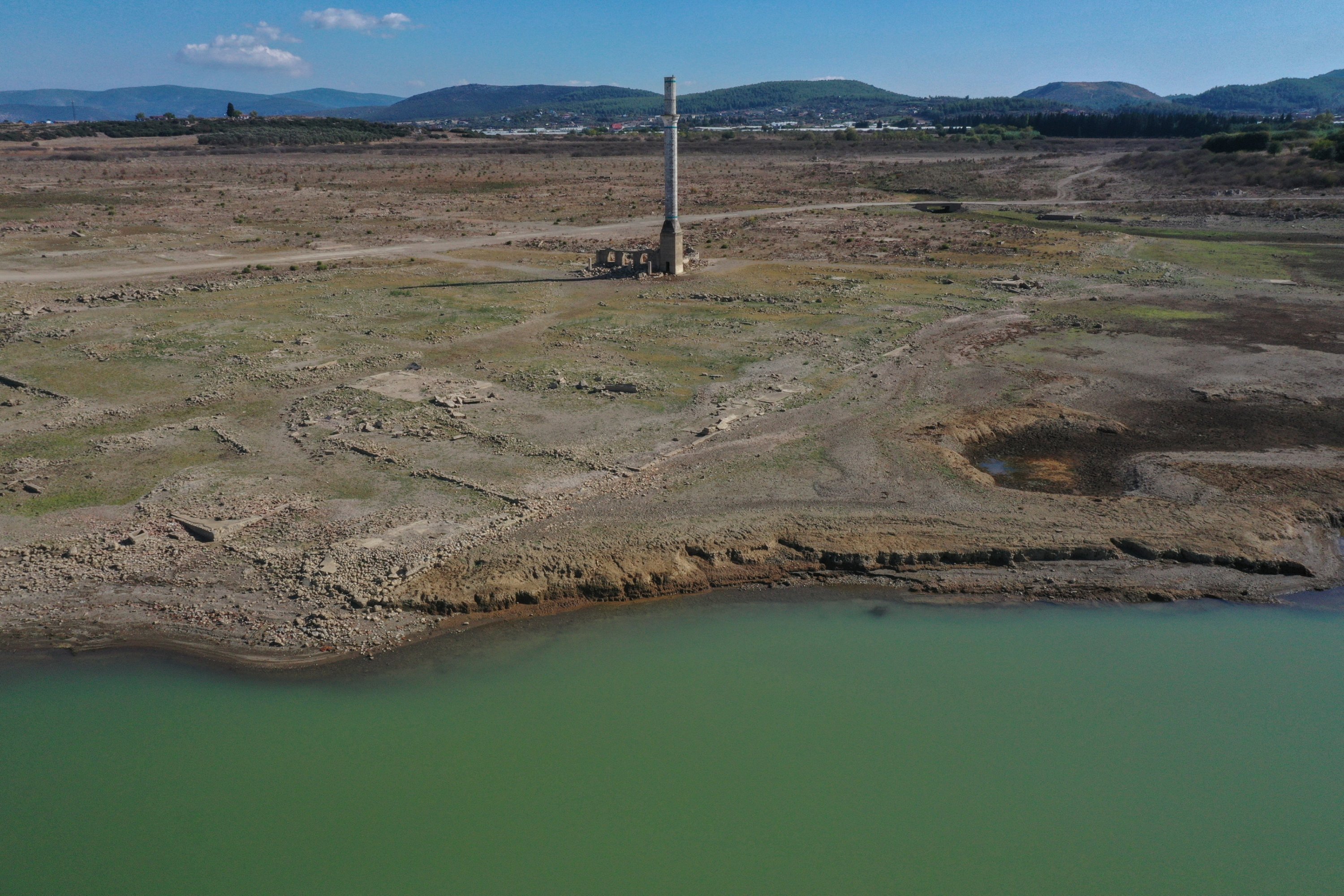Istanbul, Izmir continue to face water scarcity as occupancy rate in most of the dams supplying both metropolitan municipalities dropped to extremely low levels for October due to prolonged effects of drought
Istanbul, Türkiye’s largest city, is contending with a deepening water scarcity crisis as reservoir levels plunged to 21% last week, declining further compared to a week earlier, data from Istanbul Water and Sewerage Administration (ISKI) suggested.
Along Istanbul, western Izmir province is facing similar conditions as the water storage levels in all of its dams have declined as of Oct. 20. The water level in Tahtalı Dam, which covers approximately 40% of the city’s water needs, has reached its lowest level in the past 14 years, according to an Anadolu Agency (AA) report on Saturday.
Meanwhile, the overall dam occupancy level in Istanbul, which was 21.69% on Oct. 15, was now measured at 21.01%, ISKI data said, pointing to deficient levels in at least four of the dams supplying the city.
As per assessments, critical water levels, measured below 10%, which, according to some experts, can harm livelihood and the ecological systems if used from the very bottom of the dams, were measured in Sazlıdere (6.14%), Kazandere (5.96%), Büyükçekmece (4.08%) and Pabuçdere (3.35%).
The water levels in other dams, including Istrancalar, Terkos and Elmalı, meanwhile stood at 10.46%, 10.35% and 16.5%, respectively, while the highest occupancy was seen in Alibey at 22.96%, Darlık at 32.43% and Ömerli at 44.88%.
The total water storage capacity in the dams and ponds supplying the city, with a maximum capacity of 868.68 million cubic meters (mcm), remains at 182 mcm, the data showed. Apart from the dam supply, the city received some 607 mcm of water from the Yeşilçay and Melen streams in 2023.
The water crisis that looms further into fall with relatively low rainfall coverage resulted in the lowest recorded occupancy rate in the past nine years, according to ISKI statistics.
The dam occupancy rates as of Oct. 21 were 66.22% in 2015, 40.43% in 2016, 51.69% in 2017, 52.76% in 2018, 44.37% in 2019, 32.07% in 2020, 47.03% in 2021, and 43.48% in 2022.
Effects of drought in Izmir
Meanwhile, according to the data from the Izmir Water and Sewage Administration (IZSU), as of Oct. 20, the occupancy rates of the city’s five dams have decreased compared to the same month year earlier.
Compared to the previous year, the occupancy rates decreased by a staggering rate at Ürkmez Dam, declining from 52% to 16%, Alaçatı Kutlu Aktaş from 49% to 22% and Tahtalı from 44% to 29%.


The water levels fall from 26% to 15% in Balçova and 65% to 59% in Güzelhisar, respectively.
Serhat Ural, head of the IZSU Water Treatment Department, told AA that in recent years, precipitation has been irregular globally, affecting freshwater sources, emphasizing that due to a dry winter and hot summer, the water level in Tahtalı Dam has significantly dropped.
“Currently, Tahtalı Dam has 29.84% of water. This represents about eight-nine months’ worth of water for the Tahtalı Dam, which covers approximately 40% of Izmir’s needs. We can expect heavy rainfall, especially after January, following a hot summer. I’m not saying this to cause concern, but we are at the beginning of a drought,” he explained.
“Our current supply should last us until June, even if it doesn’t rain. But in any case, we urge our citizens to use water responsibly, whether our dams are full or not,” Ural noted.
“As of now, our dam hasn’t dropped below the 30% mark in the past 14 years. We are trying to use both underground and surface water sources equally to maintain both levels,” he said.
Devastating consequences of drought have affected other residential areas in the country, including Türkiye’s popular tourist destination, Bodrum, which is grappling with alarming water scarcity issues due to the recent closure of the main two dams supplying the resort.
In response to the climate crisis and to promote water conservation, authorities have taken several initiatives, including implementing a “Drought Management Plan” for 23 basins across the country, announced earlier this year. These measures aim to raise public awareness about the threats posed by climate change and ensure sustainable and efficient water consumption practices.
Source: Daily Sabah









